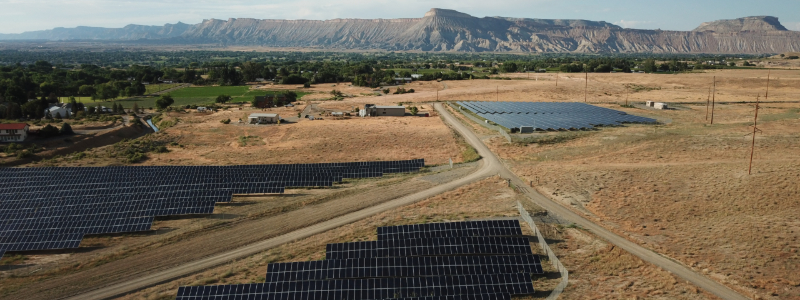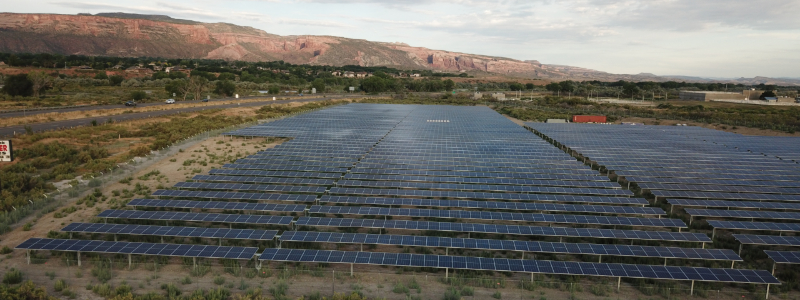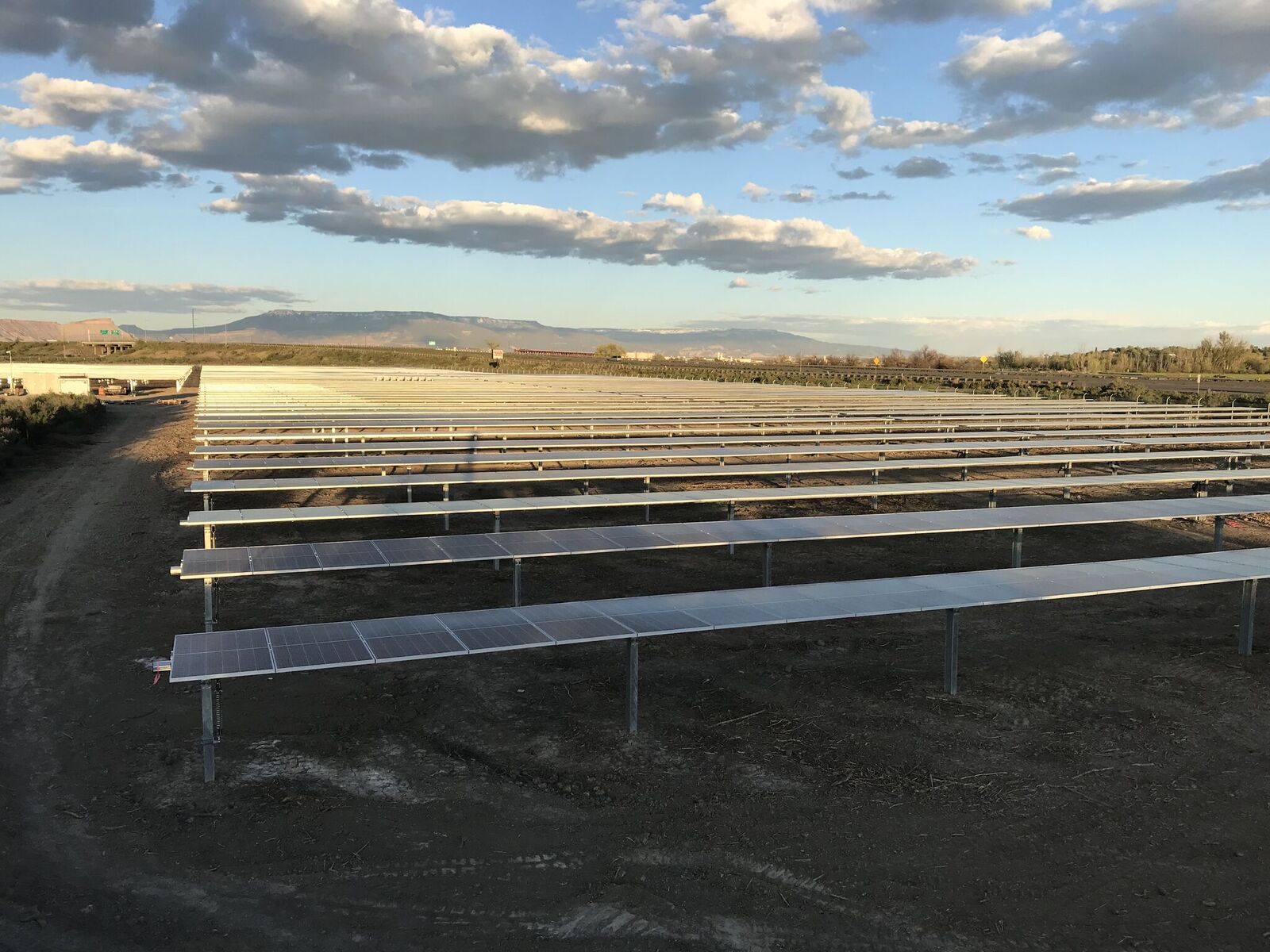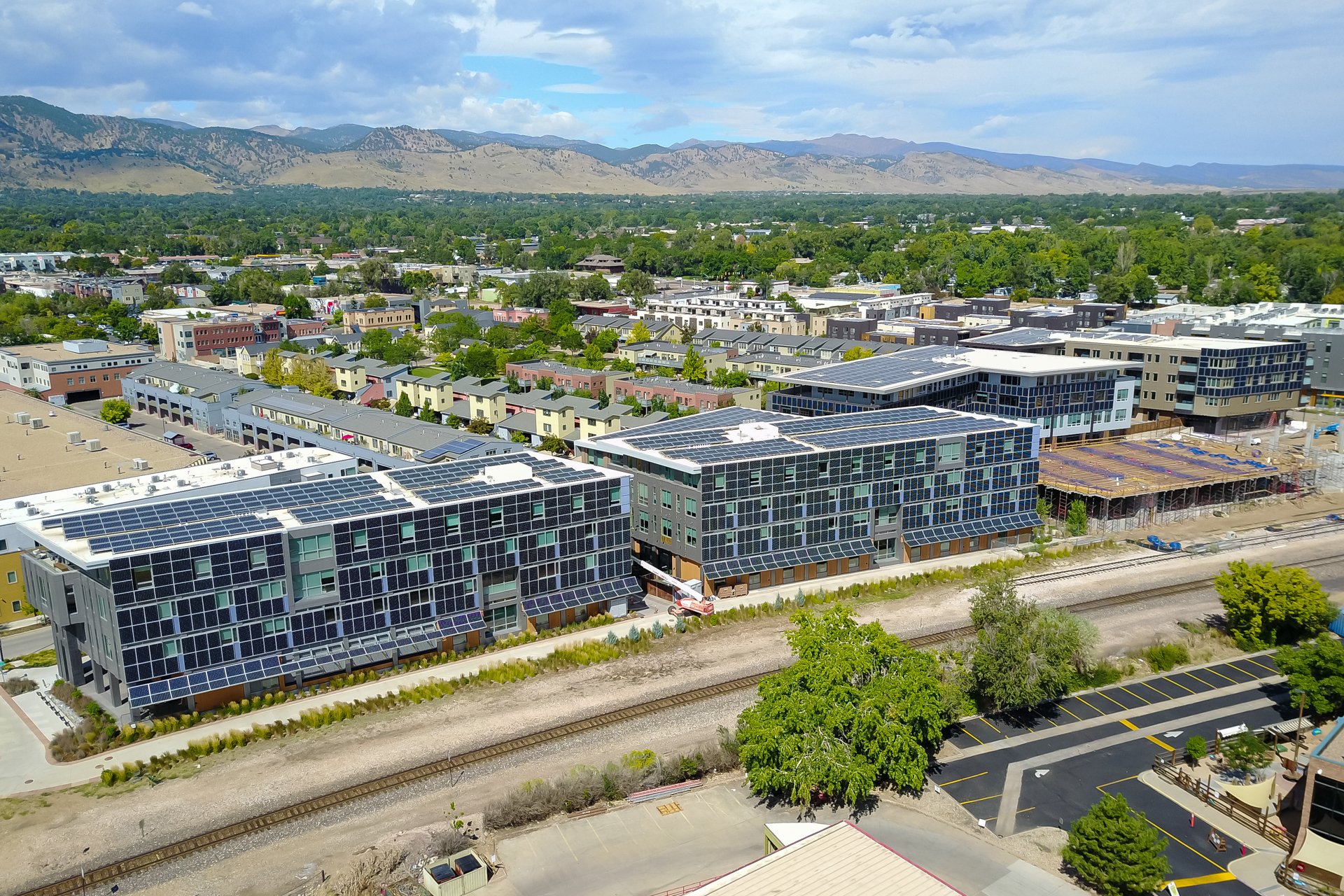Colorado Community Solar Market Overview
September 2, 2019

Today, community solar feels like the logical end for distributed clean energy – build large offsite solar arrays, let multiple households, companies, municipalities, and others subscribe to the capacity, and receive bill credits on the generation. However, only a short while ago, this concept was wildly new and innovative. It was only in 2010 that Colorado became the first state to legalize a path for community solar, and the first projects have been online for nine years. We will focus on the first stage of community solar, how it happened, what’s changed, and how companies continue to meet the challenges of shared solar in the Centennial State.
Enabling Legislation and Program Evolution

Colorado’s Community Solar Garden’s Act (CSGA) was passed in 2010 to explicitly set up a mechanism to “provide Colorado residents and commercial entities with the opportunity to participate in solar generation in addition to the opportunities available for rooftop solar generation on homes and businesses.” The bill established programs including Xcel Energy’s Solar*Rewards Community with some of the most commonly recognizable structures of community solar:
- Requiring multiple off-takers with none having the majority share
- Establishing bill credits for the value of generation
- Emphasizing the need for a range of participants, including residential and low to moderate-income (LMI) subscribers
We take these criteria for granted today, but a decade ago, this was a new concept.
Over the last decade, the legislature and Public Utilities Commission (PUC) have made some significant evolutions through the years to create a more inclusive program:
- A 5% project LMI component was changed to a 5% program goal, removing the requirement for developers to subscribe to low-income users in the solar garden. As a result, Xcel Energy’s program has requests for proposals (RFP) for 100% LMI community solar.
- Later revisions stipulated that subscribers could participate in solar farms that were located in an adjacent county. Recently, new program rules will allow future gardens and subscribers to simply be in the same utility territory, greatly expanding opportunities for subscribers.
- The program was recently expanded to allow for 5 megawatts (MW) project caps, up from 2 MW
As the national community solar markets begin to grow and display their own best practices, Colorado to evolve its shared solar program as well.
Current Market State
One of the defining characteristics of the Colorado market is the RFP mechanism for selecting projects and developers. The RFP allows the utility to strive for the ‘best’ price and be nimble in requesting additional commitments. These commitments can come in a variety of forms, such as guaranteed low income or residential subscriptions, or a payment structure of separately controlled bill credits and renewable energy credits (RECs). The payment structures developers need to provide to compete in the RFP process cause the REC to be used as a misvalued cost lever, and the bill credit to be a falsely placed pricing floor. The combination of this led to negative RECs. Rather than being able to either bid in an all-in value (RECs and bill credits) or have more concrete additional bid expectations, developers are required to bid within an amorphous structure of falsely quantitative economics mixed with somewhat unknown preferences on qualitative features of the bid.
Thanks to the RFP process, the Colorado market tends to be akin to an “insiders baseball” game: developers have to have a keen understanding of the specific geography, the evolving goals of the programs, and the subscriber pool available in the state. As a result, in 81+ MW of community solar projects completed in CO, ~93% was developed by a handful of companies.
Pivot in Colorado

Pivot Energy moved its headquarters from St. Louis to Denver in 2015. Since that time, the company has successfully developed or been awarded nearly 50 MW across 33 projects, making it the largest community solar developer in the state. Our team has achieved this through a strategic Colorado-based team of developers with intimate knowledge of the landscape and market. Pivot was also able to reduce the cost of a highly variable project input: subscriber acquisition and management. We developed SunCentral software and services to provide an improved customer experience that is cost-effective and comprehensive to recruit, share information with and invoice subscribers. Today, Pivot manages hundreds of subscribers in Colorado, including those in projects for other developers and asset owners in the state.
The developers in Colorado, both Pivot and others, remain committed to growing the Colorado market and maintaining it as a sustainable community solar program for the long-term. Pivot’s policy team is active on legislation to create a standard offering and expand the program for community solar that will open up new and greater opportunities for increased participation, both by developers and subscribers throughout the state and expand the impact of community solar in the state.
###
About Pivot Energy
Pivot Energy is a Denver-based solar energy company that is focused on helping accelerate the rapid transition taking place in the energy industry to a more decentralized and cleaner approach to power generation. Pivot offers a distributed energy platform that includes a range of services and software aimed at serving the full commercial solar ecosystem, including retail customers, project developers, system operators, utilities, and financiers. The company develops, finances, builds, and manages community and commercial solar projects around the country. Pivot operates on a triple bottom line basis, measuring success by the positive impact to people, planet, and profit. Learn more at pivotenergy.net.


